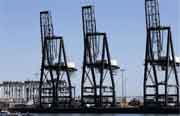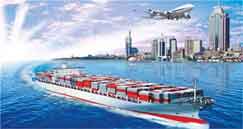| |
|
| |
|
 |
Supply
Chain by the Numbers |
| |
|
| |
- Aug. 31, 2016 -
|
| |
|
| |
|
| |
|
| |
Where have are all the Containers Gone? China Orders Lower Logistics Costs; Food Prices Continue to Fall; Target Reduces Out-of-Stocks by 50% Through Vendor Management |
| |
|
| |
| |
| |
2.2% |

|
|
|
| |
| |
|
50%
|
|
That's by how much Target stores has been able to reduce its out-of-stocks after working with suppliers over the last six months to reduce lead time variability. "In the past, an unacceptable number of vendor shipments were received by our DCs either too early or too late," says Target COO John Mulligan. "This variability drove a lot of extra workload in the DCs while reducing our reliability downstream. As a result this year, we have been collaborating with our vendors to increase the percent of shipments that arrive on the correct date and we have already seen meaningful progress. The percent of shipments that arrive on time has more than doubled and we expect to see additional improvement as we roll out new processes to additional vendors over time." In addition, thanks to changes in the prioritization of inbound
processing, the time it takes to unload shipments into Target DCs has been
trimmed by over 50%. |
| |
| |
|
| |
| |
16% |
 |
That's the level to which China plans to reduce its domestic logistics costs as a percent of GDP from about 18% currently. That's much more than double the 7.86% percent of GDP in the US, and even substantially more than developing country rivals such as India. That goal is included in a new six-year plan to reduce domestic logistics costs to make China's economy more competitive. Another goal of is to reduce the proportion of logistics costs to the total value of goods carried by the sector by 0.5 percentage point, from the current 4.9% to 4.4% in the next three years, according to the Ministry of Transport. "The traditional [Chinese] logistics model is no longer sustainable," the Ministry said. How will this happen? The plan urges cooperation across different regions and between modes of transport, the cutting of red tape and toll fees, vertical integration of transport and warehousing service providers, and better synergies among seaports, airports, railway lines and expressways. It is also encouraging mergers among logistics service providers as well, and greater use of 3PLs. |
| |
| |
|
|
|
| |
 |
 |
| |
|
|
| |